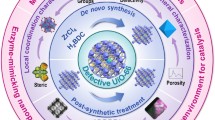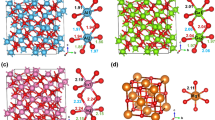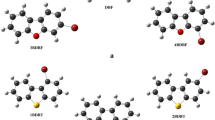Abstract
van der Waals (vdW) corrected periodic density functional theory (DFT) calculations and microkinetic modeling were employed to elucidate the mechanism and energetics of dehydrogenation of tetrahydropyrrole, a model organic hydrogen carrier, on Pt(111). The overall dehydrogenation is endothermic while individual dehydrogenation steps can be endothermic or exothermic. The calculations indicate that the first dehydrogenation step proceeds via the C–H scission of an α-carbon (with respect to nitrogen). Subsequently, the remaining α- and two β-C–H bonds can be dissociated via multiple energetically similar pathways, wherein the second dehydrogenation step is rate controlling. The inclusion of vdW forces shifts the potential energy surface (PES) downward by an average 0.6 eV indicating that while the activation barriers remain unaffected, there can be significant influence on the overall rate due to increased coverage of intermediates. N-methylation of tetrahydropyrrole weakens adsorption of initial intermediates, indicating that the PES may generally be shifted up thereby affecting the overall kinetics. Finally, there exists a generally linear relationship between the transition state and final state energies of the dehydrogenation reaction.










Similar content being viewed by others
References
Zuttel A (2009) Materials for hydrogen storage. Mater Today 6(9):24–33
van den Berg AWC, Arean CO (2008) Materials for hydrogen storage: current research trends and perspectives. Chem Commun 6:668–681
Dalebrook AF, Gan WJ, Grasemann M, Moret S, Laurenczy G (2013) Hydrogen storage: beyond conventional methods. Chem Commun 49(78):8735–8751
He T, Pachfule P, Wu H, Xu Q, Chen P (2016) Hydrogen carriers. Nat Rev Mater 1(12):1–17
Preuster P, Alekseev A, Wasserscheid P (2017) Hydrogen storage technologies for future energy systems. Annu Rev Chem Biomol Eng 8:445–471
Zhu QL, Xu Q (2015) Liquid organic and inorganic chemical hydrides for high-capacity hydrogen storage. Energy Environ Sci 8(2):478–512
Preuster P, Papp C, Wasserscheid P (2017) Liquid organic hydrogen carriers (LOHCs): toward a hydrogen-free hydrogen economy. Acc Chem Res 50(1):74–85
Aakko-Saksa PT, Cook C, Kiviaho J, Repo T (2018) Liquid organic hydrogen carriers for transportation and storing of renewable energy—review and discussion. J Power Sources 396:803–823
Crabtree RH (2017) Nitrogen-containing liquid organic hydrogen carriers: progress and prospects. ACS Sustain Chem Eng 5(6):4491–4498
Niermann M, Beckendorff A, Kaltschmitt M, Bonhoff K (2019) Liquid Organic hydrogen carrier (LOHC)—assessment based on chemical and economic properties. Int J Hydrogen Energy 44(13):6631–6654
Niermann M, Drunert S, Kaltschmitt M, Bonhoff K (2019) Liquid organic hydrogen carriers (LOHCs)—techno-economic analysis of LOHCs in a defined process chain. Energy Environ Sci 12(1):290–307
Makepeace JW, He T, Weidenthaler C, Jensen TR, Chang F, Vegge T, Ngene P, Kojima Y, de Jongh PE, Chen P, David WIF (2019) Reversible ammonia-based and liquid organic hydrogen carriers for high-density hydrogen storage: recent progress. Int J Hydrogen Energy 44(15):7746–7767
Saadi FH, Lewis NS, McFarland EW (2018) Relative costs of transporting electrical and chemical energy. Energy Environ Sci 11(3):469–475
Sotoodeh F, Smith KJ (2013) Analysis of H2 release from organic polycyclics over Pd catalysts using DFT. J Phys Chem C 117(1):194–204
Sotoodeh F, Huber BJM, Smith KJ (2012) Dehydrogenation kinetics and catalysis of organic heteroaromatics for hydrogen storage. Int J Hydrogen Energy 37(3):2715–2722
Sotoodeh F, Smith KJ (2011) Structure sensitivity of dodecahydro-N-ethylcarbazole dehydrogenation over Pd catalysts. J Catal 279(1):36–47
Sotoodeh F, Zhao L, Smith KJ (2009) Kinetics of H2 recovery from dodecahydro-N-ethylcarbazole over a supported Pd catalyst. Appl Catal A 362(1):155–162
Gianotti E, Taillades-Jacquin M, Roziere J, Jones DJ (2018) High-purity hydrogen generation via dehydrogenation of organic carriers: a review on the catalytic process. Acs Catal 8(5):4660–4680
Yang M, Dong Y, Fei SX, Ke HZ, Cheng HS (2014) A comparative study of catalytic dehydrogenation of perhydro-N-ethylcarbazole over noble metal catalysts. Int J Hydrogen Energy 39(33):18976–18983
Oh J, Bathula HB, Park JH, Suh YW (2019) A sustainable mesoporous palladium-alumina catalyst for efficient hydrogen release from N-heterocyclic liquid organic hydrogen carriers. Commun Chem. https://doi.org/10.1038/s42004-019-0167-7
Peters W, Seidel A, Herzog S, Bösmann A, Schwieger W, Wasserscheid P (2015) Macrokinetic effects in perhydro-N-ethylcarbazole dehydrogenation and H2 productivity optimization by using egg-shell catalysts. Energy Environ Sci 8(10):3013–3021
Chen Z, Yang M, Zhu T, Zhang Z, Chen X, Liu Z, Dong Y, Cheng G, Cheng H (2018) 7-ethylindole: A new efficient liquid organic hydrogen carrier with fast kinetics. Int J Hydrogen Energy 43(28):12688–12696
Yang M, Cheng GE, Xie DD, Zhu T, Dong Y, Ke HZ, Cheng HS (2018) Study of hydrogenation and dehydrogenation of 1-methylindole for reversible onboard hydrogen storage application. Int J Hydrogen Energy 43(18):8868–8876
Amende M, Gleichweit C, Schernich S, Höfert O, Lorenz MPA, Zhao W, Koch M, Obesser K, Papp C, Wasserscheid P, Steinrück H-P, Libuda J (2014) Size and structure effects controlling the stability of the liquid organic hydrogen carrier dodecahydro-N-ethylcarbazole during dehydrogenation over Pt model catalysts. J Phys Chem Lett 5(8):1498–1504
Amende M, Gleichweit C, Werner K, Schernich S, Zhao W, Lorenz MPA, Höfert O, Papp C, Koch M, Wasserscheid P, Laurin M, Steinrück H-P, Libuda J (2014) Model catalytic studies of liquid organic hydrogen carriers: dehydrogenation and decomposition mechanisms of dodecahydro-N-ethylcarbazole on Pt(111). ACS Catal 4(2):657–665
Gleichweit C, Amende M, Schernich S, Zhao W, Lorenz Michael PA, Höfert O, Brückner N, Wasserscheid P, Libuda J, Steinrück H-P, Papp C (2013) Dehydrogenation of dodecahydro-N-ethylcarbazole on Pt(111). Chemsuschem 6(6):974–977
Amende M, Schernich S, Sobota M, Nikiforidis I, Hieringer W, Assenbaum D, Gleichweit C, Drescher HJ, Papp C, Steinruck HP, Gorling A, Wasserscheid P, Laurin M, Libuda J (2013) Dehydrogenation mechanism of liquid organic hydrogen carriers: dodecahydro-N-ethylcarbazole on Pd(111). Chemistry 19(33):10854–10865
Schwarz M, Bachmann P, Silva TN, Mohr S, Scheuermeyer M, Spath F, Bauer U, Dull F, Steinhauer J, Hohner C, Dopper T, Noei H, Stierle A, Papp C, Steinruck HP, Wasserscheid P, Gorling A, Libuda J (2017) Model catalytic studies of novel liquid organic hydrogen carriers: indole, indoline and octahydroindole on Pt(111). Chemistry 23(59):14806–14818
Ouma CNM, Modisha PM, Bessarabov D (2019) Catalytic dehydrogenation of the liquid organic hydrogen carrier octahydroindole on Pt (111) surface: ab initio insights from density functional theory calculations. Appl Surf Sci 471:1034–1040
Ouma CNM, Modisha P, Bessarabov D (2018) Insight into the adsorption of a liquid organic hydrogen carrier, perhydro-i-dibenzyltoluene (i = m, o, p), on Pt, Pd and PtPd planar surfaces. RSC Adv 8(56):31895–31904
Verevkin SP, Emel’yanenko VN, Pimerzin AA, Vishnevskaya EE (2011) Thermodynamic analysis of strain in heteroatom derivatives of indene. J Phys Chem A 115(44):12271–12279
Verevkin SP, Emel’yanenko VN, Pimerzin AA, Vishnevskaya EE (2011) Thermodynamic analysis of strain in the five-membered oxygen and nitrogen heterocyclic compounds. J Phys Chem A 115(10):1992–2004
Clot E, Eisenstein O, Crabtree RH (2007) Computational structure–activity relationships in H2 storage: how placement of N atoms affects release temperatures in organic liquid storage materials. Chem Commun 22:2231–2233
Pez GP, Scott AR, Cooper AC, Cheng H (2006) Hydrogen storage by reversible hydrogenation of pi-conjugated substrates, US 7,101,530
Cui Y, Kwok S, Bucholtz A, Davis B, Whitney RA, Jessop PG (2008) The effect of substitution on the utility of piperidines and octahydroindoles for reversible hydrogen storage. New J Chem 32(6):1027–1037
Kresse G, Furthmuller J (1996) Efficiency of ab-initio total energy calculations for metals and semiconductors using a plane-wave basis set. Comput Mater Sci 6(1):15–50
Kresse G, Furthmuller J (1996) Efficient iterative schemes for ab initio total-energy calculations using a plane-wave basis set. Phys Rev B 54(16):11169–11186
Monkhorst HJ, Pack JD (1976) Special points for Brillouin-zone integrations. Phys Rev B 13(12):5188–5192
Kresse G, Joubert D (1999) From ultrasoft pseudopotentials to the projector augmented-wave method. Phys Rev B 59(3):1758–1775
Perdew JP, Burke K, Ernzerhof M (1996) Generalized gradient approximation made simple. Phys Rev Lett 77(18):3865–3868
Steinmann SN, Corminboeuf C (2011) A generalized-gradient approximation exchange hole model for dispersion coefficients. J Chem Phys 134(4):044117
Steinmann SN, Corminboeuf C (2011) Comprehensive benchmarking of a density-dependent dispersion correction. J Chem Theory Comput 7(11):3567–3577
Gautier S, Steinmann SN, Michel C, Fleurat-Lessard P, Sautet P (2015) Molecular adsorption at Pt(111). How accurate are DFT functionals? Phys Chem Chem Phys 17(43):28921–28930
Henkelman G, Uberuaga BP, Jonsson H (2000) A climbing image nudged elastic band method for finding saddle points and minimum energy paths. J Chem Phys 113(22):9901–9904
Rangarajan S, Maravelias CT, Mavrikakis M (2017) Sequential-optimization-based framework for robust modeling and design of heterogeneous catalytic systems. J Phys Chem C 121(46):25847–25863
Grabow L, Mavrikakis M (2011) On the mechanism of methanol synthesis on Cu through CO and CO2 hydrogenation. ACS Catal 1:364–384
NIST NIST Webbook (https://webbook.nist.gov/chemistry/). https://webbook.nist.gov/chemistry/. Accessed 27 Mar 2015
Tang W, Sanville E, Henkelman G (2009) A grid-based Bader analysis algorithm without lattice bias. J Phys Condens Matter 21(8):084204
Tourillon G, Raaen S, Skotheim TA, Sagurton M, Garrett R, Williams GP (1987) A near edge X-ray absorption fine-structure study of the adsorption of pyrrole and N-methylpyrrole on Pt(111)—orientation and dissociation of the adsorbed molecules. Surf Sci 184(1–2):L345–L354
Kliewer CJ, Bieri M, Somorjai GA (2008) Pyrrole hydrogenation over Rh(111) and Pt(111) single-crystal surfaces and hydrogenation promotion mediated by 1-methylpyrrole: a kinetic and sum-frequency generation vibrational spectroscopy study. J Phys Chem C 112(30):11373–11378
Hegedus L, Mathe T, Tungler A (1996) Hydrogenation of pyrrole derivatives. 1. Hydrogenations over palladium. Appl Catal a Gen 143(2):309–316
Hegedus L, Mathe T, Tungler A (1996) Hydrogenation of pyrrole derivatives. 2. Hydrogenations over supported noble metal catalysts. Appl Catal A 147(2):407–414
Stegelmann C, Andreasen A, Campbell CT (2009) Degree of rate control: how much the energies of intermediates and transition states control rates. J Am Chem Soc 131(23):8077–8082
Campbell CT (2001) Finding the rate-determining step in a mechanism—comparing DeDonder relations with the "degree of rate control". J Catal 204(2):520–524
Wang S, Temel B, Shen J, Jones G, Grabow LC, Studt F, Bligaard T, Abild-Pedersen F, Christensen CH, Norskov JK (2011) Universal Bronsted–Evans–Polanyi relations for C-C, C–O, C–N, N–O, N–N, and O–O dissociation reactions. Catal Lett 141(3):370–373
van Santen RA, Neurock M, Shetty SG (2010) reactivity theory of transition-metal surfaces: a Bronsted–Evans–Polanyi linear activation energy-free-energy analysis. Chem Rev 110(4):2005–2048
Ferrin P, Simonetti D, Kandoi S, Kunkes E, Dumesic JA, Norskov JK, Mavrikakis M (2009) Modeling ethanol decomposition on transition metals: a combined application of scaling and Bronsted–Evans–Polanyi relations. J Am Chem Soc 131(16):5809–5815
Alcala R, Mavrikakis M, Dumesic JA (2003) DFT studies for cleavage of C-C and C–O bonds in surface species derived from ethanol on Pt(111). J Catal 218(1):178–190
Wang SG, Vorotnikov V, Vlachos DG (2014) A DFT study of furan hydrogenation and ring opening on Pd(111). Green Chem 16(2):736–747
Mei DH, Lebarbier VM, Rousseau R, Glezakou VA, Albrecht KO, Kovarik L, Flake M, Dagle RA (2013) comparative investigation of benzene steam reforming over spinel supported Rh and Ir catalysts. Acs Catal 3(6):1133–1143
Ruiz VG, Liu W, Zojer E, Scheffler M, Tkatchenko A (2012) Density-functional theory with screened van der Waals interactions for the modeling of hybrid inorganic–organic systems. Phys Rev Lett 108(14):146103
Liu W, Maass F, Willenbockel M, Bronner C, Schulze M, Soubatch S, Tautz FS, Tegeder P, Tkatchenko A (2015) quantitative prediction of molecular adsorption: structure and binding of benzene on coinage metals. Phys Rev Lett 115(3):036104
Maurer RJ, Ruiz VG, Tkatchenko A (2015) Many-body dispersion effects in the binding of adsorbates on metal surfaces. Journal of Chemical Physics 143(10):102808
Tkatchenko A, DiStasio RA Jr, Car R, Scheffler M (2012) Accurate and efficient method for many-body van der Waals interactions. Phys Rev Lett 108(23):236402
Carrasco J, Liu W, Michaelides A, Tkatchenko A (2014) Insight into the description of van der Waals forces for benzene adsorption on transition metal (111) surfaces. Journal of Chemical Physics 140(8):084704
Klimes J, Bowler DR, Michaelides A (2010) Chemical accuracy for the van der Waals density functional. Journal of Physics-Condensed Matter 22(2):022201
Hensley AJR, Ghale K, Rieg C, Dang T, Anderst E, Studt F, Campbell CT, McEwen JS, Xu Y (2017) DFT-based method for more accurate adsorption energies: an adaptive sum of energies from RPBE and vdW density functionals. J Phys Chem C 121(9):4937–4945
Wellendorff J, Silbaugh TL, Garcia-Pintos D, Norskov JK, Bligaard T, Studt F, Campbell CT (2015) A benchmark database for adsorption bond energies to transition metal surfaces and comparison to selected DFT functionals. Surf Sci 640:36–44
Campbell CT (2019) Energies of adsorbed catalytic intermediates on transition metal surfaces: calorimetric measurements and benchmarks for theory. Acc Chem Res 52(4):984–993
Moses PG, Mortensen JJ, Lundqvist BI, Norskov JK (2009) Density functional study of the adsorption and van der Waals binding of aromatic and conjugated compounds on the basal plane of MoS2. J Chem Phys 130(10):104709
Rangarajan S, Mavrikakis M (2015) Adsorption of nitrogen and sulfur containing compounds on NiMoS for hydrotreating reactions: a vdW-corrected DFT study. AIChE J 61(12):4036–4050
Acknowledgements
SR acknowledges and is thankful for the rigorous training, inspiration, and mentorship that he has received over the years he has been associated with Prof. Manos Mavrikakis. SR wishes to thank the editors of this special issue in the honor of Prof. Mavrikakis, namely Profs. Lars Grabow and Ye Xu, for the opportunity to submit this manuscript. SR acknowledges partial financial support from the American Chemical Society Petroleum Research Fund, Grant Number: #59476 and his startup funds at Lehigh University. The use of high-performance computing resources available through Lehigh Research Computing is acknowledged. Also, this work used the Extreme Science and Engineering Discovery Environment (XSEDE), which is supported by National Science Foundation Grant Number ACI‐1548562.
Author information
Authors and Affiliations
Corresponding author
Ethics declarations
Conflict of interest
The author declares that he has no conflict of interest.
Ethical Approval
This research does not involve human participants and/or animals.
Additional information
Publisher's Note
Springer Nature remains neutral with regard to jurisdictional claims in published maps and institutional affiliations.
Electronic supplementary material
Below is the link to the electronic supplementary material.
Rights and permissions
About this article
Cite this article
Rangarajan, S., Tian, H. A DFT Investigation of the Dehydrogenation of Tetrahydropyrrole on Pt(111). Top Catal 63, 688–699 (2020). https://doi.org/10.1007/s11244-020-01249-4
Published:
Issue Date:
DOI: https://doi.org/10.1007/s11244-020-01249-4




